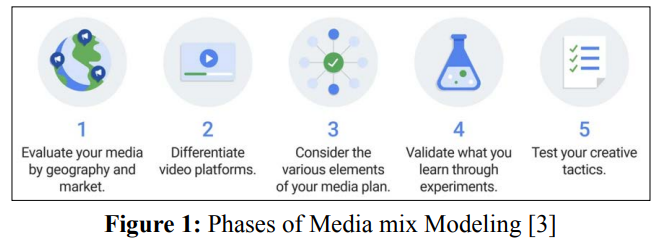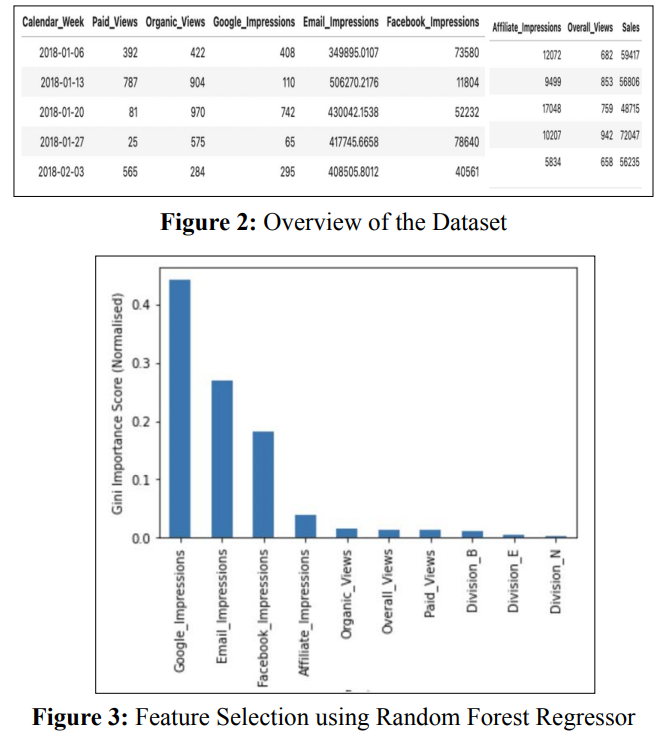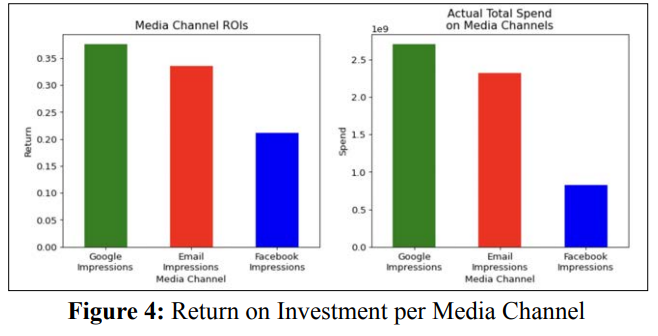Author(s): Ananya Jha* and Ritambhara Jha
ABSTRACT
In an era of fractured media landscapes and fleeting consumer attention, crafting the ideal marketing media mix has become an intricate puzzle. This paper navigates the labyrinthine path towards an effective and dynamic blend of channels, ensuring brand messages resonate with the ever-evolving digital audience. By prioritizing audience understanding, aligning with strategic goals, selecting the right channels, and implementing machine learning based modeling, brands can orchestrate a symphony of strategies that captivate consumers and drive meaningful results. The paper also emphasizes the need for data-driven decision-making and continuous optimization of the media mix in an ever-changing marketing environment.
Grabbing a user’s attention amidst a sensory overload requires mastering the art of the marketing media mix – a delicate balance of channels while leveraging data-driven insights. This paper delves into the intricacies of this dynamic equation, uncovering the principles that guide brands towards a mix that resonates with their target audience and achieves their strategic objectives. Building an effective media mix revolves around the following aspects:
In 1929, the Harvard Business School investigated whether common patterns existed within the marketing expenses of food manufacturers. Nearly twenty years later, James Culliton replicated the study with a larger sample and refined methods, but reached the same conclusion: no predictable patterns emerged. This finding inspired Culliton’s metaphor of the business executive as a creative “mixer of ingredients,” adapting strategies to unique circumstances [1].
The Marketing Mix (the 4Ps) is a foundational framework popularized by McCarthy in the 1960s. It guides marketers in strategically crafting the product, price, place (distribution), and promotion mix. This careful alignment aims to satisfy the target audience while achieving the company’s goals [2].
Econometric models that measured the impact of media on sales were enhanced according to seven patterns of response to advertising. Those patterns were named current, shape, competitive, carryover, dynamic, content and media effects (Tellis, 2006) [2].
Over the past few years, fitting models using a Bayesian framework has been a suggested methodology by researchers [2].
Today, data collection, integration and tracking is automated with CRM systems, customer data platforms and web analytics.
Cloud computing powered models are now more flexible, fast and easy to update. Marketing teams with lesser statistical expertise can also leverage automated media mix models.

Our dataset contains the marketing expense data for numerous campaigns, with channel week granularity. It is ideal for our research in business analysis and market mix modeling techniques. This dataset contains 3051 rows and 9 columns. The dataset spans 113 weeks, beginning in January 2018 and ending in February 2020. It incorporates spending data from eight media channels, including Facebook, Google search impressions, email impressions, YouTube (paid and organic), affiliate channel views, and overall views. It also contains sales data against those spending.

Feature selection was performed using random forest regression.
By selecting the top ten features we implement the cross validation on linear regression modeling to enhance the model accuracy by evaluating the R-squared and Mean Square Error metrics. Result showcases the model suggested ROIs compared to actual total spends for media channels. According to figure 4., the media mix modeling for the above dataset, we infer that Google search impression has the highest return in comparison to other media channels. Therefore, when selecting from media mix models, organizations should bear in mind the percentage of the model outcomes that are data-driven, to the model results driven by the assessment to manage the challenge.

Finding the ideal marketing media mix is not a destination, but a continuous journey. It’s an ongoing quest for relevance, fueled by audience insights, strategic alignment, channel exploration, and data- driven optimization. By embracing this iterative approach, brands can weave together an engaging set of messages that not only captures fleeting attention, but cultivates lasting engagement and fosters brand loyalty. Companies can traverse the increasingly complex media ecosystem and optimize their spending for better results by adopting machine learning. In the ever-evolving digital landscape, the ideal media mix becomes a synergy of marketing and digital strategies, constantly adapting to the changing media behavior and ensuring brands dance in perfect harmony with their audience [4,5].
While this paper explores the fundamental principles of building a marketing media mix, several areas merit further research and investigation: application of AI in basic tenets of marketing i.e audience targeting and creative optimization, rise of immersive virtual experiences and its integration into marketing and effectiveness of cross channel attribution to name a few. Continuing research and exploration of these topics will provide marketers with the tools and understanding needed to create impactful campaigns in the years to come.
